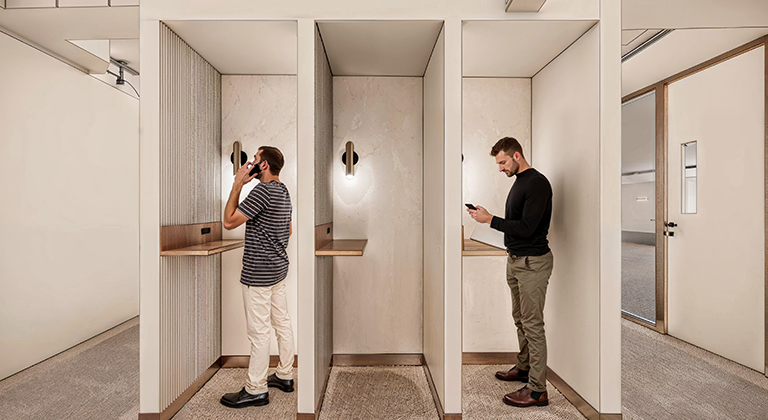Article
Leading Virtually: How to Build Real Influence from Anywhere
The great myth of remote leadership is that it’s just standard leadership…over Zoom.
It’s not.
Remote leadership is a different discipline entirely.
In the office, you can often get by on likability, energy, and quick improvisation. But distance strips away the props: no casual corridor chats, no knowing nods, no rescue-by-aside when a meeting stalls. Remote leadership demands something rarer: intention, precision, and systems that hum without you physically present.
It’s not harder—it’s clearer. More honest. And in that clarity, everything that works—and everything that doesn’t—becomes unmistakably visible.
1. Structure Is Your Presence
In traditional leadership, presence creates structure. Remotely, it’s the reverse—structure is what creates your presence.
Chaos in your calendar means chaos for your team. Without clear processes, employees fill the gaps with guesswork, leading to duplicated effort and silent delays. Data confirms it: remote employees who have structured meeting rhythms and clear agendas are 2.1 times more likely to feel aligned and confident about their priorities.
That’s why the best leaders think like architects, designing:
- Operating rhythms that are visible and repeatable
- Feedback loops that don’t require your face on a call
- Decision lanes that make ownership and accountability obvious
So, ask yourself:
- Which decisions truly require me?
- Where does work stall — and is the cause ambiguity, bottlenecks, or hesitation?
- What happens when I’m unreachable? Does momentum continue, or collapse?

2. Writing as a Leadership Skill
Words carry weight in remote leadership. They don’t decorate the work—they are the work.
Writing clarifies, aligns, and scales intent. It defines the path, reduces rework, and cuts through ambiguity. Done well, it replaces hours of meetings. Done poorly, it requires them.
Three rules:
- Be clear, not charming
- Decide in writing, not around it
- Structure for scanability—headers, bullets, tight paragraphs
If your writing doesn’t enable execution, it’s not communication. It’s noise.
P.S. Be intentional with CCs. Including everyone on every email or message creates clutter and slows work. Only include people who need to act or stay informed.
3. Trade Control for Context
The reflex to control is strong. Especially when you can’t see your team. But remote micromanagement is just managerial insecurity at scale—and it never works.
High-performing virtual teams succeed not because they’re constantly monitored, but because they’re context-rich: they know what matters, why it matters, and how their work connects to the whole. McKinsey reports that context-rich leadership correlates with 40% higher engagement and 30% stronger performance during remote transitions.
This kind of leadership requires:
- Clear definitions of “great” — in observable, measurable terms
- Explicit links between tasks and real outcomes
- Autonomy — not in theory, but in actual, delegated decision-making
Context doesn’t mean overloading people with detail. It means ensuring they have the information, trust, and frameworks to act without delay or hesitation.
Control throttles pace. Context multiplies it.

4. Culture Isn’t a Zoom Happy Hour
Remote culture isn’t made in all-hands calls or virtual happy hours. It is forged in the deliberate crafting of rituals—shared human moments that transcend the screen’s cold geometry.
It’s starting meetings with a genuine check-in. Publicly celebrating small wins. Building digital “watercoolers” where informal chat isn’t just allowed—it’s encouraged.
If you’re not shaping these signals intentionally, they’ll be shaped accidentally — often by the loudest person in the Slack thread, and not always in ways you’d choose.
5. Asynchronous ≠ Anarchy
Most remote teams underperform not because people aren’t working—but because they’re waiting.
Waiting for a decision. A file. A message. A green dot.
The most effective remote teams are designed to move without needing everyone online at once. They adopt structured asynchronous workflows, and the payoff is dramatic: case studies show 35% higher productivity, 25% faster delivery, and 40% fewer mistakes. Atlassian, for example, reclaimed 3.75 million minutes — the equivalent of 375,000 meetings—simply by integrating Loom into its workflows.
If you want a high-output team, build an asynchronous muscle:
- Reduce dependency chains so one person’s delay doesn’t freeze the whole team
- Separate communication from collaboration: use messages and documents to share context and decisions; reserve live meetings for tasks that truly need real-time input
- Use time zones as a feature, not a flaw — hand off work across regions to keep momentum continuous
6. Lead the Rhythm, Guard the Edges
Remote work blurs the line between life and work. As a leader, your responsibility is to set a tempo that keeps the team productive without driving anyone to burnout.
Start with yourself. Boundaries aren’t optional — being constantly “on” doesn’t set a standard; it sets a trap. Your team will follow, straight to exhaustion: a Gallup survey reports 40% of remote employees feel their work-life boundaries are ignored, a top predictor of burnout. By signalling your availability deliberately — setting office hours, checking messages on a schedule, and marking when you’re offline — you show that sustained focus and high output rely on structure, not constant presence. Leaders who protect their own edges set the pace and model sustainable work habits for the entire team.
With those boundaries in place, establish rituals that punctuate the day: a 15-minute morning huddle, a midweek creative pause, a Friday “what went well” session. These touchpoints create rhythm and momentum without demanding constant check-ins, keeping work purposeful and balanced.

7. Stay Hungry, Stay Humble
The digital landscape doesn’t wait. Tools change. Norms evolve. Attention shifts.
The smartest remote leaders move with it — not by clinging to what worked yesterday, but by adapting in real time. They learn openly, listen more than they speak, and refine without ego. They invest in their own growth with the same urgency they expect from their teams, making upskilling and reskilling a shared obsession.
Because in this world, your learning curve is your leadership curve. Let it flatten, and so does your influence.
Stop Translating the Office — Lead What’s Next
You’re not here to replicate office life online. You’re here to lead in a world that’s decentralised, asynchronous, and unforgiving of vagueness.
The best remote leaders don’t manage harder; they lead smarter:
- They build systems that create freedom
- They write with purpose to cut through noise
- They shape culture through intentional signals
- They make clarity contagious
- They stay curious and adaptable
You don’t need to be in the room to lead the room. You just need to have built it right.
Let us help power your remote leadership. Explore our Virtual Office solutions—designed to support your structure, boost your presence, and keep your team ahead of the curve.




